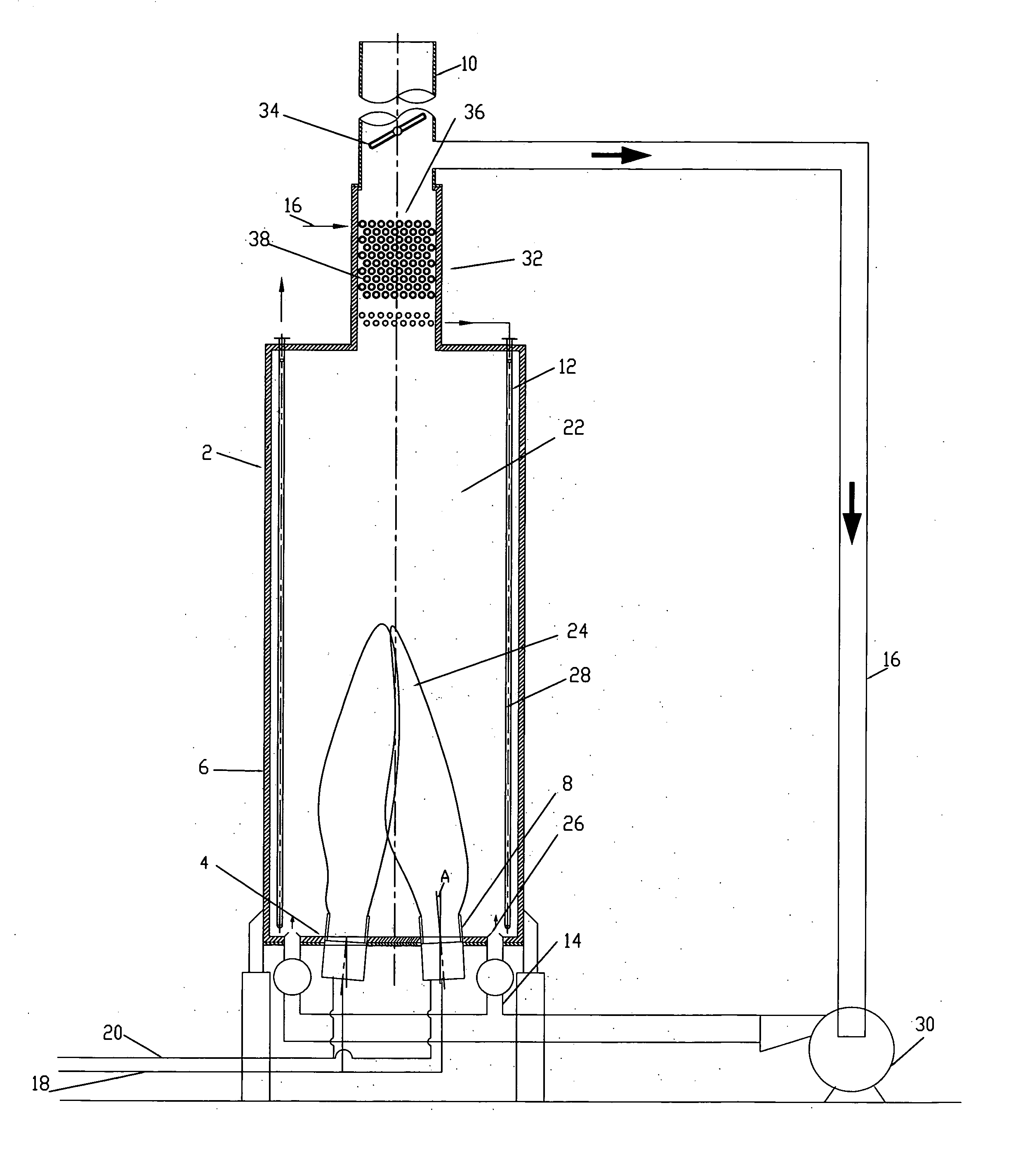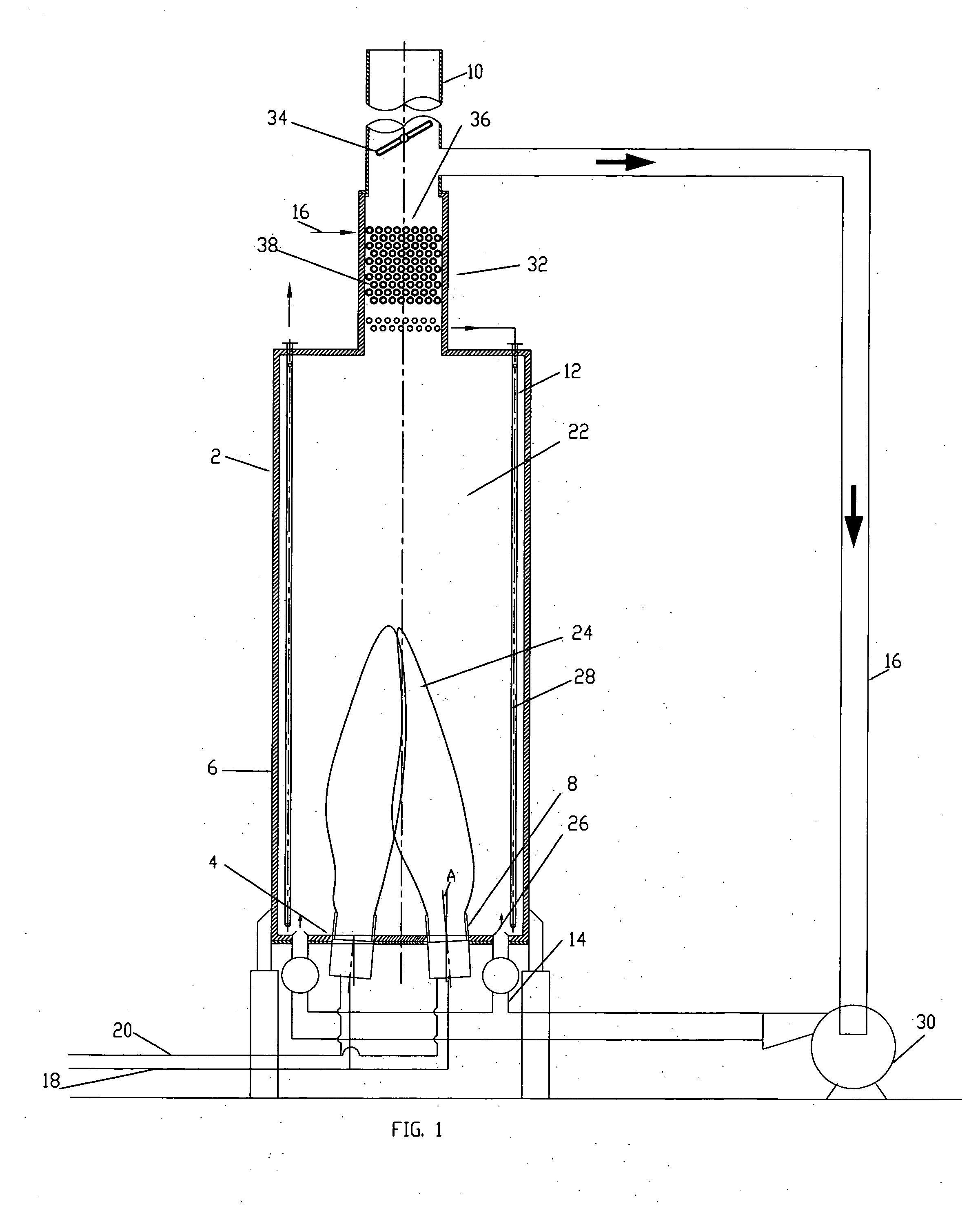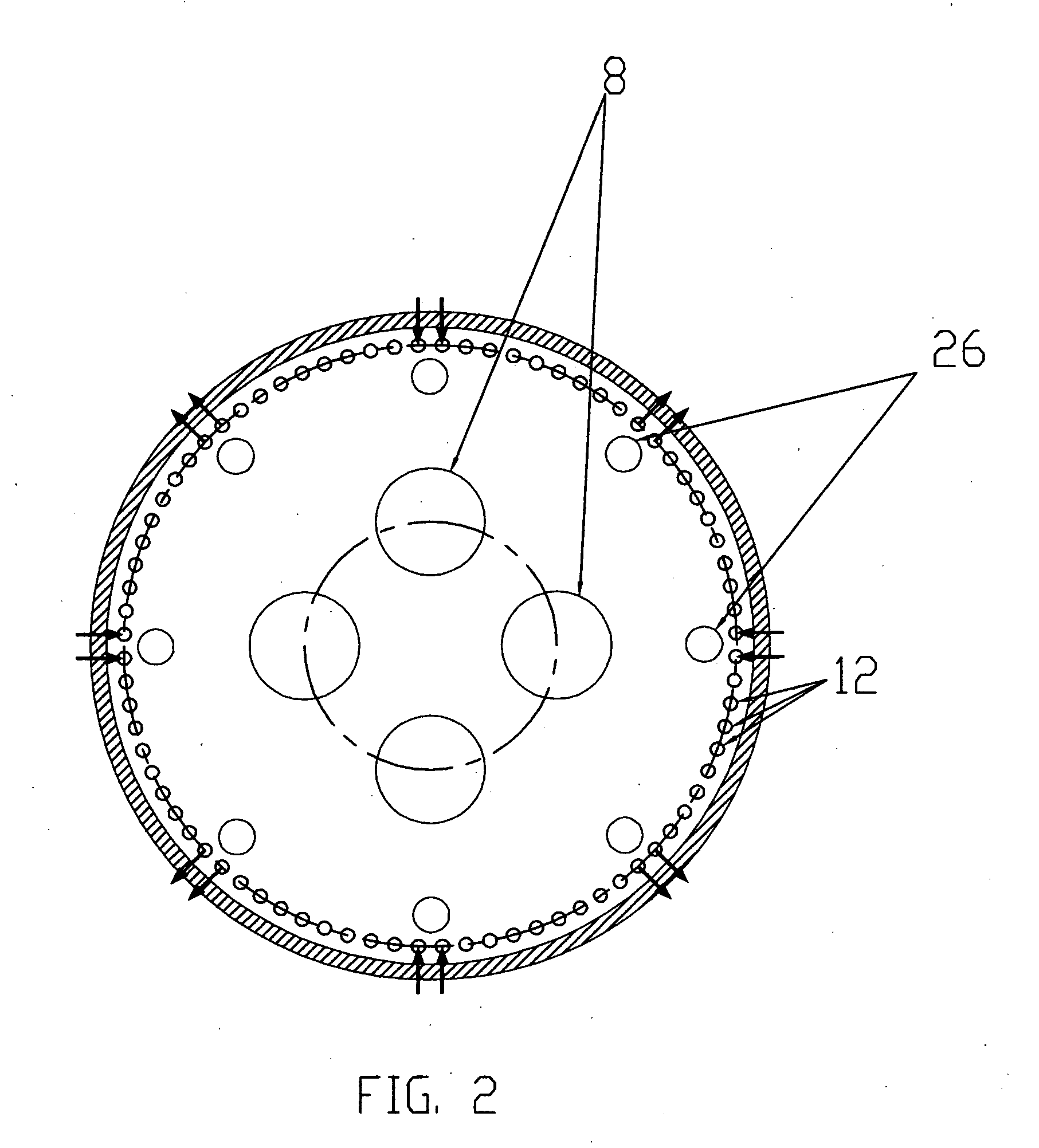Fired heater
a heater and heater technology, applied in the field of fired heaters, can solve the problems of refineries that cannot process the required throughput through furnaces, the ability of refineries to push their heaters to the limit, and the cracking of hydrocarbons, so as to achieve the effect of reducing the buildup of coke in the tubes
- Summary
- Abstract
- Description
- Claims
- Application Information
AI Technical Summary
Benefits of technology
Problems solved by technology
Method used
Image
Examples
Embodiment Construction
[0026]In one embodiment of my invention, there is provided a method of operating a fired heater to heat a hydrocarbon feedstock flowing though a tubing positioned along a periphery of the heater. The heater includes one or more burners positioned at a spaced apart location inwardly from the tubing. The method is carried out by introducing a plurality of relatively cool gas streams between the burners and the tubing to moderate burner heat flux on the tubing. The method is expected to provide good benefits when heating heavy oils, for example, petroleum oils or petroleum residuum, to high outlet temperatures, for example, in the range of 750 to 950 F.
[0027]In the preferred embodiment, the burners produce flue gases. These flue gases are cooled and the relatively cool gas streams are formed from a portion of the cooled flue gases. In the range of 15% to 60% of the flue gases produced by the at least one burner can be used in this manner. The streams are preferably introduced into the ...
PUM
 Login to View More
Login to View More Abstract
Description
Claims
Application Information
 Login to View More
Login to View More - Generate Ideas
- Intellectual Property
- Life Sciences
- Materials
- Tech Scout
- Unparalleled Data Quality
- Higher Quality Content
- 60% Fewer Hallucinations
Browse by: Latest US Patents, China's latest patents, Technical Efficacy Thesaurus, Application Domain, Technology Topic, Popular Technical Reports.
© 2025 PatSnap. All rights reserved.Legal|Privacy policy|Modern Slavery Act Transparency Statement|Sitemap|About US| Contact US: help@patsnap.com



